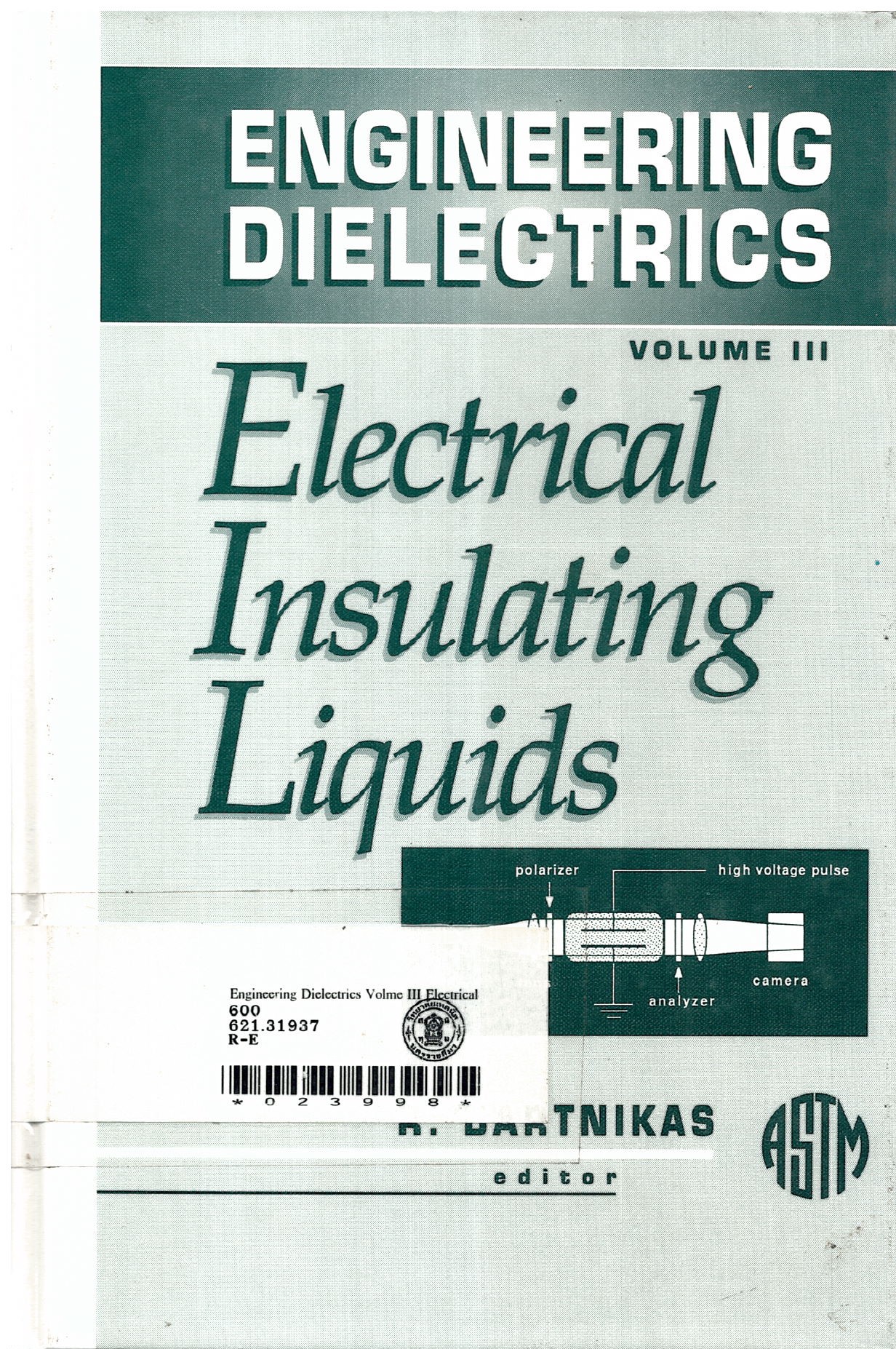ข้อมูลทรัพยากร

Engineering Dielectrics Volme III Electrical Insulating Liquids.
ประเภททรัพยากร : หนังสือเล่ม
ชั้นเก็บ : ตู้ 9 ชั้น 3 ฝั่งซ้าย
หมวด : 600
เลขหมู่หนังสือ : 621.31937
สำนักพิมพ์ : ASTM.
ผู้แต่ง : R. Bartnikas.
ยอดคงเหลือ : 1
เนื้อหาย่อ : The present volume constitutes an integral part of the monograph series on Engineering Dielec-
trics and concerns the electrical behavior and properties of insulating liquids. Some material on
measurement techniques is also included in so far as it may be different from that, or is not
described fully, in Vol. IIB, which is devoted to measurement techniques mainly as applied to solid
dielectrics. Volume III is a precursor of Vol. IV, which deals primarily with the subject of electrical
solid-liquid insulating systems.
A total of five chapters comprise Volume III. The electrical characteristics of insulating liquids
are treated from the fundamental point of view in the first two chapters. Chapter I deals with the
permittivity and dielectric loss and provides as well a description of the test methods and specimen
cells particularly devised for the measurement of the dielectric properties of liquids over the entire
frequency spectrum, extending into the opical frequency range. Since the vast majority of insulat-
ing liquids are utilized at power frequencies, a substantial amount of effort is expended in
discussing the dielectric behavior at these frequencies. However, the dielectric frequency response
of insulating liquids is also given considerable attention in that it permits to establish the nature of
the dielectric loss at power frequencies and simultaneously reveals some pertinent data on the
molecular structure of the liquids and on the manner in which that structure influences the dielectric
loss and permittivity behavior. Chapter 2 considers the fundamental conduction processes, forma-
tion of space charges and prebreakdown and breakdown mechanisms from the quantitative point of
view. The latter material prepares the reader for an introduction into Chapter 3, which presents a
qualitative account of the phenomenological events that precipitate the electrical breakdown of
liquids. Chapter 4 discusses the physical and chemical properties of mineral oils and provides a
description of the various test methods for determining these properties. Finally, Chapter 5 consid-
ers the general molecular structural nature of insulating liquids and their composition.
Both SI and CGS-Gaussian units are employed in this volume as well as throughout the entire
monograph series. The concurrent use of the two systems of measure is intentional, since it is
desirable to remain au fait with both systems in order to sustain a fluently conversant link between
the more recent and early parts of the literature on dielectrics. Useful conversion factors between
the different systems of units are given in the appendices; a detailed treatment on the various
systems of measure and their evolvement may be found in Vol. IIB.
I wish to take the opportunity to thank all the contributing authors of this volume as well as their
respective institutions for the contribution of their valuable engineering time. My sincere thanks are
also extended to Drs. H. Sharbough and W. Starr for their reading of, and constructive comments
on, the manuscripts; in the same respect, I greatly appreciate the helpful comments received from
Committee D27 on Electrical Insulating Liquids and Gases, who graciously joined D9 in cospon-
soring Volume III. My thanks are equally due to the editing staff of ASTM for their assistance. I am
grateful to my own institution for its encouragement, support, and permission for my continuing
work on the monograph series. Since a substantial portion of my time and effort has been spent in
my own premises, I am most grateful to my wife Margaret and my two children, Andrea and
Thomas, for their patience.